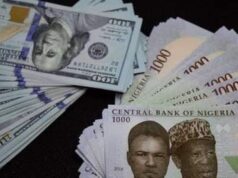JUNE 26, 2018 – Moody’s Investors Service yesterday assigned first-time long term global scale local-currency bank deposit and issuer ratings of B2 to First City Monument Bank Limited (FCMB) and Fidelity Bank Plc (Fidelity), and long term B3 global scale local-currency bank deposit and issuer ratings to Diamond Bank Plc (Diamond). The three mid-tier Nigerian banks account for approximately 12% of the country’s banking assets. Moody’s also assigned local currency bank deposit national scale ratings (NSRs) of A2.ng to FCMB and Fidelity and A3.ng to Diamond. A full list of the banks’ ratings is at the end of this press release.
The primary drivers of our assessment of the banks’ standalone credit profiles are their robust loss-absorbing buffers, above our global average for similarly rated peers, and their resilient local currency liquidity buffers. These strengths, however, are moderated by the challenging operating environment in Nigeria, as the oil and gas dependent economy slowly recovers from its 2016 recession. Nigeria’s challenging operating environment is reflected in our ‘Very Weak +’ macro profile score for Nigeria (the complete Nigerian macro profile is available on www.moodys.com).
Moody’s also incorporates one notch of rating uplift, based on a high probability of government support, from the banks’ Baseline Credit Assessments (BCA) of b3 for FCMB and Fidelity and caa1 for Diamond. The B2 local-currency deposit and issuer ratings assigned to FCMB and Fidelity are aligned with the ratings of the Nigerian government.
For FCMB and Fidelity, Moody’s has assigned a stable outlook on long-term global scale bank deposit and issuer ratings. The stable outlooks reflect our expectations that over the next 18 months credit costs associated with the banks’ loan portfolio will be absorbed by pre-provision profits and that overall, these banks’ credit fundamentals will continue to remain in line with peers at the B2 rating level.
For Diamond, Moody’s has assigned a positive outlook on its long-term global scale bank deposit and issuer ratings. Diamond’s positive outlook reflects our expectation that elevated asset risks will decline this year on account of the resolution of some of its past due loans that have not been impaired. It also reflects our view that the ongoing deleveraging of the bank will improve the bank’s funding profile and support capital.
RATINGS RATIONALE AND KEY RATING DRIVERS
FCMB (First City Monument Bank) Limited
FCMB has been assigned B2 local currency bank deposit and issuer ratings, with a stable outlook. The ratings are underpinned by a standalone BCA of b3. A full list of FCMB’s ratings is provided at the end of this press release.
FCMB’s BCA of b3 reflects the bank’s robust levels of tangible common equity versus peers internationally. At year-end 2017, FCMB’s tangible common equity to risk-weighted asset ratio (TCE/RWA) was 13.7% which compares favourably to the b3 global peer average of 11%. However, we view FCMB’s capitalization as being moderated by the bank’s exposure to foreign currency risks. As of December 2017, 55% of the bank’s loan book was denominated in foreign currency, and any further depreciation of the naira will inflate risk-weighted assets, thus reducing capital ratios. Over the next 18 months we expect the bank’s relatively robust pre-provision income and flat loan growth, as sought by management, to support capital.
The bank’s nonperforming loan (NPL) ratio was just 4.7% as of December 2017, versus the banking system NPL ratio of 15.1% as of September 2017. FCMB’s exposure to upstream and midstream oil and gas sectors and foreign currency denominated loans leave the bank’s loan performance vulnerable to both global oil prices and the depreciation of the local currency, the naira. Additionally, FCMB has significant exposure to retail loans (individuals and SMEs) of approximately 28%, making the bank’s asset risk more sensitive to downside scenarios than its domestic peers. However, we expect only modest upward pressure on FCMB’s NPL ratio in 2018 as the vast majority of the bank’s oil and gas upstream and midstream portfolio has been restructured to reflect the new oil price environment and, as such, we expect many of these loans to remain performing over our outlook period.
From a liquidity perspective, the bank is able meet all its foreign currency obligations over the next 18 months with its current stock of foreign currency liquid assets. However, the bank’s foreign currency loans to foreign currency deposits ratio of 198% will require the bank to continue to rely on confidence-sensitive dollar funding should the bank want to maintain its current level of foreign currency assets going forward. Positively, a large proportion of market funds are from less confidence-sensitive development finance institutions or international banks with a developmental focus.
FCMB benefits from a strong retail franchise as indicated by its capacity to grow its retail deposits amidst a challenging operating environment. On the asset side, although a potential source of asset risk for the bank, as highlighted above, the banks retail exposure will continue to support profitability given the high margins in this sector versus our expectation of manageable credit costs going forward.
The bank’s long-term B2 local currency bank deposit rating incorporates one notch of rating uplift from its b3 BCA, based on Moody’s assessment of a high probability of government support in case of financial stress. The high willingness to support the banks by the Nigerian government was demonstrated in the last crisis, when banks were rescued through recapitalisations and balance sheet clean ups via outright purchases of NPLs by the Asset Management Corporation of Nigeria (AMCON).
Fidelity Bank Plc
Fidelity has been assigned B2 local currency bank deposit and issuer ratings, with a stable outlook. The ratings are underpinned by a standalone BCA of b3. A full list of Fidelity’s ratings is provided at the end of this press release.
Fidelity’s BCA of b3 reflects the bank’s resilient asset quality and relatively high provision coverage of NPLs. As of December 2017, Fidelity’s NPLs were 6.4% of gross loans which compares favorably against the banking system average of 15.1% as of September 2017. The bank’s coverage ratio, including regulatory reserves, was 109% which would provide capacity for the bank to write off some of its old NPLs and reduce the ratio. Although Fidelity’s high exposure to foreign currency denominated loans is a source of risk, the bank’s exposure to the oil and gas industry is relatively low at 26%. The bank’s oil and gas exposure is predominantly to the upstream segment which makes up 73% of oil and gas loans and which has not produced any NPLs in 2017, following the restructuring of these loans. Overall, we expect Fidelity’s NPL ratio to remain stable at the current level of about 6.5%.
Another factor that Moody’s considered is Fidelity’s relatively solid tangible common equity ratio which provides a reasonable loss absorbance buffer. As of December 2017, tangible common equity as a percentage of risk-weighted assets stood at 15.4%, which is higher than the global b3 BCA peer median of 11%, and compares favorably against local peers. However, we view Fidelity’s reported capitalization as being moderated by the bank’s exposure to foreign currency risks. As of December 2017, 46% of the bank’s loan book was denominated in foreign currency, and any further depreciation of the naira will inflate risk-weighted assets, thus reducing capital ratios. Like many of its peers, Moody’s considers Fidelity’s capacity to grow its profitability as limited because of the still difficult, although improving, operating environment and the declining yields on the bank’s government security exposures, which will limit profit retention for capital growth.
Fidelity’s relatively high loans to deposits ratio of 103% (please note that the loan balance used in the calculation of this ratio includes on-lending facilities) indicates a tighter funding requirement than other local banks and global peers. The bank’s deposits declined in 2017 because it transferred out government-related deposits to the Central Bank of Nigeria (CBN) on account of the Treasury Single Account (TSA). The deposits were predominantly foreign currency deposits, and as a result, Fidelity’s foreign currency deposits declined by 51%, leading to a high foreign currency loans to foreign currency deposits ratio of above 370%. Moody’s considers this to be credit negative because, although the bank is predominantly deposit funded, it will also need to rely on more expensive and confidence-sensitive non-deposit funding, which will likely strain its margins and profitability.
However, Fidelity’s overall liquidity buffers are robust, with the bank’s reported liquidity ratio of 36% against a regulatory requirement of 30%. From a foreign currency perspective, though foreign currency liquid assets are modest, they are sufficient to meet the bank’s upcoming foreign currency obligations over the next 18 months.
The bank’s long-term B2 local currency bank deposit rating incorporates one notch of rating uplift from its b3 BCA, based on Moody’s assessment of a high probability of government support in case of financial stress. The high willingness to support the banks by the Nigerian government was demonstrated in the last crisis, when banks were rescued through recapitalisations and balance sheet clean ups via outright purchases of NPLs by the Asset Management Corporation of Nigeria (AMCON).
Diamond Bank Plc
Diamond has been assigned B3 local currency bank deposit and issuer ratings, with a positive outlook. The ratings are underpinned by a standalone BCA of caa1. A full list of Diamond’s ratings is provided at the end of this press release.
Diamond’s BCA of caa1 reflects the bank’s high asset risks as indicated by its relatively high Moody’s adjusted NPL ratio (which adds accounts overdue by longer than 90 days but not impaired to the impaired loans stock) and credit costs which strained profitability, especially in 2017. Moody’s adjusted NPLs accounted for around 42% of gross loans as of December 2017. Diamond has relatively high exposures to the oil & gas sector (predominantly the trouble midstream sector) at 52% of total loans as of December 2017 and a high proportion of foreign currency denominated loans that make up 46% of the bank’s total loans. Though credit losses will remain elevated, asset risks will decline this year on account of resolution of some of its past due loans that have not been impaired.
The bank also faces relatively tight foreign currency funding, because the bank’s foreign currency loans to foreign currency deposits of 156% will require the bank to rely on confidence-sensitive market funding to support its dollar assets. Similar to other Nigerian mid-tier banks, dollar deposits contracted in 2017 and although we expect the situation to improve this year, mid-tier banks such as Diamond will likely remain under some pressure because competition for these deposits has increased. Additionally, about $330 million of Diamond’s foreign currency obligations are maturing within the next 18 months, a substantial amount relative to the bank’s foreign currency liquid assets.
That said, Diamond’s standalone credit profile also captures the bank’s relatively robust capital buffers and relatively low nominal leverage. As of December 2017, the bank’s tangible common equity was 14.7% and its shareholders’ equity to total assets ratio was 13.0%, although this is moderated by the low provisioning. Diamond also benefits from its strong franchise as a retail bank, and therefore benefits from stable and low cost retail deposits (around 70% of deposits are retail deposits, which is among the highest retail ratio of any rated Nigerian bank). In addition, Diamond maintains high liquidity buffers in local currency. As of December 2017, the bank’s reported liquidity ratio was 43% which provides a cushion to the minimum requirement of 30%.
The bank’s long-term B3 local currency bank deposit rating incorporates one notch of rating uplift from its caa1 BCA, based on Moody’s assessment of a high probability of government support in case of financial stress. In 2013 the CBN classified Diamond as a Systemically Important Bank (SIB), which supports our high willingness of support assumption. Additionally, the high willingness to support the banks by the Nigerian government was demonstrated in the last crisis, when banks were rescued through recapitalisations and balance sheet clean ups via outright purchases of NPLs by the Asset Management Corporation of Nigeria (AMCON).
STABLE OUTLOOK ON FCMB AND FIDELITY
The stable outlooks for FCMB and Fidelity reflect our expectations that over the next 18 months credit costs associated with the banks’ loan portfolio will be absorbed by pre-provision profits and that overall, these banks’ credit fundamentals will continue to remain in line with peers at the B2 rating level.
POSTIVE OUTLOOK ON DIAMOND
Diamond’s positive outlook reflects our expectation that asset risks will decline this year on account of the resolution of some of its past due loans that have not been impaired. It also reflects our view that the ongoing deleveraging of the bank will improve the bank’s funding profile and support capital.
WHAT COULD MOVE THE RATINGS — UP/DOWN
For FCMB and Fidelity, the government’s issuer rating and the foreign currency deposit rating ceiling currently act as a constraint on the banks’ long term ratings. For the banks to be upgraded, these constraints would first need to be removed via a sovereign upgrade and the banks would have to demonstrate an ability to contain non-performing loans while maintaining good core profitability and capital generation capacity. For Diamond, the bank’s local currency ratings could be upgraded if our expectation of a material reduction in the bank’s assets risks materializes.
Conversely, a downgrade of Nigeria’s sovereign ratings, implying reduced capacity to provide support, could cause a downgrade of the banks’ ratings. Additionally, the banks’ ratings could be downgraded if their asset quality deteriorates meaningfully, putting pressure on the banks’ profitability and capital buffers. A substantial deterioration of the banks’ liquidity profile could also trigger a downgrade.









